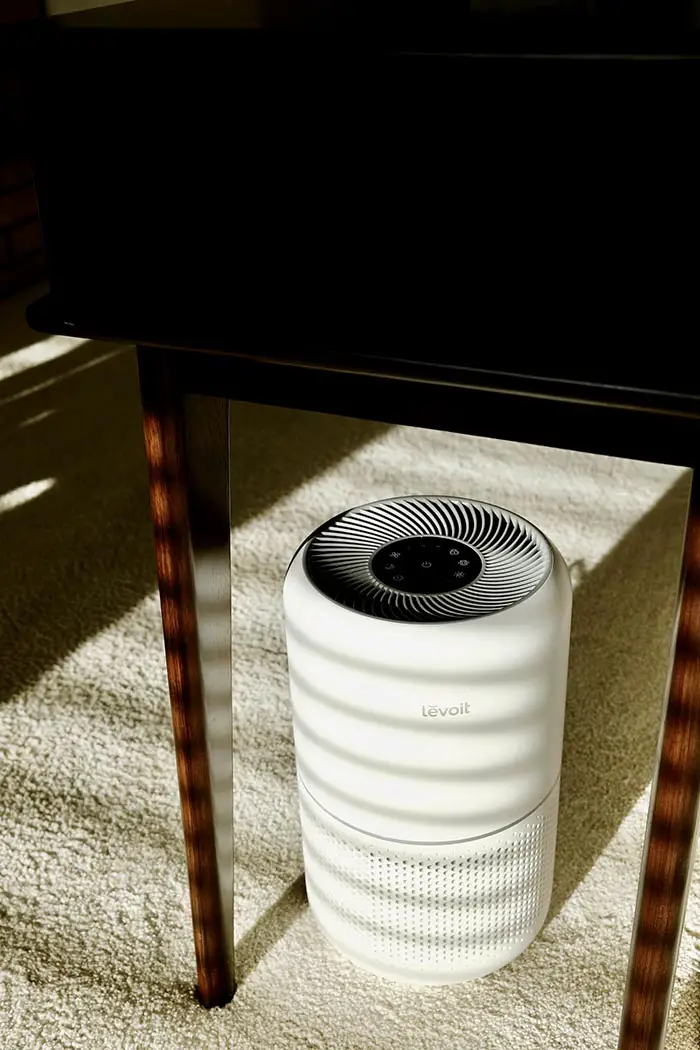Are you tired of constantly sneezing, feeling congested, or waking up with a stuffy nose? The culprit may be poor indoor air quality. Many of us spend a significant amount of time indoors, at home, or in the office, and often overlook the importance of clean air.
The air we breathe can have a huge impact on our overall health and well-being. In this informative blog post, we will discuss 12 helpful tips that you can start implementing today to improve the air quality in your room and create a healthier living environment for yourself and your loved ones. Let’s dive in and discover how small changes can make a big difference.

Natural incense offers a simple and effective way to purify the air in your space. Burning incense made from plants like sage or palo santo releases the natural oils of these materials into the air, effectively cleansing the atmosphere of unwanted pollutants. Unlike chemical air purifiers, which can be harsh and uninviting, natural incense is a traditional and welcoming way to promote clean, healthy air. In addition to refreshing the environment, burning natural incense can also promote feelings of calm and relaxation. Maybe it’s time to try out a new scent and see how it affects your mood and air quality.
Dust, dirt, and allergens often settle on surfaces and fabrics, contributing to poor air quality. Regular dusting, vacuuming, and washing of fabrics such as curtains and bedding can significantly reduce the amount of pollutants in the air.
Don’t forget to clean those often overlooked spaces under furniture, on top of cupboards or shelves, and decorative items. It’s also essential to declutter your space: piles of paper, clothing, and other items can trap dust and create an environment conducive to dust mites and mold. Especially if you have pets, ensure they are groomed regularly to minimize shedding of hair and dander. When you keep your space clean, you are sure to improve the air quality and create a healthy and relaxing environment.
Did you know that proper ventilation is incredibly important for the air quality in your home? That’s right! Without adequate ventilation, harmful gases and pollutants can accumulate and linger in your space. Be sure to open windows regularly to let fresh air in and stagnant air out.
Bathrooms and bedrooms are areas where proper ventilation is not to be overlooked. Be sure to run the bathroom fan while showering and for a short time after to reduce moisture levels, which can lead to mold growth. In your bedroom, crack open a window or door at night to promote fresh air circulation while you sleep.
Did you know that certain indoor plants can cleanse the air that we breathe in our homes? According to NASA’s Clean Air Study, some house plants have been shown to filter out harmful toxins such as benzene, formaldehyde, and trichloroethylene from indoor air. These chemicals can be found in everyday household items like paint, furniture, and cleaning products, and can cause a wide range of health problems from headaches to respiratory issues.
In this case, greenery not only adds to the aesthetics of your room but also serves as a natural air purifier. Some popular indoor plants that have been proven to improve air quality include peace lily, spider plant, and English ivy.
Air purifiers work by trapping airborne pollutants such as dust, pollen, and bacteria, and releasing clean air back into your space. There are various types of air purifiers available in the market today; some use filters and others use a technology called ionization.
The choice of an air purifier depends on the specific needs of your room. If you suffer from allergies, a HEPA (High-Efficiency Particulate Air) filter purifier could be a great option. It can filter out 99.97% of particles that are 0.3 microns or larger in size, making it an excellent tool for allergy sufferers. If you are sensitive to odors, an activated carbon filter purifier could be a better fit.
When you smoke indoors, you expose yourself, your family, and your pets to harmful chemicals that can cause respiratory problems, cancer, and other serious health conditions. Secondhand smoke contains over 7,000 chemicals, including at least 70 that are known to cause cancer. These chemicals can linger in the air for hours and even days after smoking, putting everyone in the household at risk.
To protect your loved ones and yourself, it’s essential to avoid smoking indoors. Instead, step outside to light up or quit smoking altogether. Your decision to avoid tobacco smoke is sure to improve the air quality in your room and promote a healthier living environment for all.
Aerosol sprays have become a common household item for cleaning, personal care, and other uses. What many people don’t know is that aerosols are a significant source of air pollution. They contain volatile organic compounds (VOCs) that can irritate the eyes, nose, and throat and contribute to respiratory problems.
If you’re looking for ways to reduce your exposure to aerosols, consider switching to more natural or homemade cleaning products. For example, you can make an all-purpose cleaner using ingredients like vinegar and essential oils. You’ll save money in the long run and reduce your impact on the environment.
Did you know that high humidity levels can create the perfect environment for mold and dust mites to thrive? These pesky little organisms enjoy damp and humid conditions, which means that if your home is too moist, you might be playing host to some unwelcome guests.
The tricky thing is that sometimes, high humidity levels are not always easy to detect with the naked eye. The solution? Invest in a hygrometer, an inexpensive device that measures humidity levels in the air. Ideally, indoor humidity should be between 30-50%. If your room is too humid, use a dehumidifier to bring levels down and keep mold and dust mites at bay.
Cooking delicious meals is a daily routine for many households. Yet, the fumes produced by cooking can be harmful to our health if we inhale large quantities of smoke. An exhaust fan might be helpful as it sucks out the odors, smoke, and steam produced by cooking, thereby providing a cleaner and healthier atmosphere in the kitchen.
This fan also prevents moisture buildup, which can cause mold and mildew to grow, resulting in a damp and uncomfortable cooking environment. Cooking with an exhaust fan may even minimize the need for deep cleaning of kitchen surfaces as it keeps them free from oil and grease.
Artificial fragrances in air fresheners, candles, and cleaning products may make your room smell good but they often contain harmful chemicals that can contribute to poor indoor air quality. These synthetic fragrances can release volatile organic compounds (VOCs), which can cause headaches, dizziness, and irritation to the eyes, nose, and throat.
Instead, consider using natural alternatives to scent your room, such as essential oils or beeswax candles. These products can provide the pleasant aroma you desire without compromising the air quality in your space. Moreover, opting for fragrance-free or naturally scented cleaning products can reduce your exposure to harmful VOCs. A clean room does not smell like artificial roses or lemon, but one with fresh, clean air.
If you’re one of those people who love to have a temperature-controlled environment at home, then you must know the importance of regularly changing the AC filters. AC filters keep the air inside our homes clean and pollutant-free. Over time, these filters can become clogged with dust and other pollutants, leading to a decrease in the efficiency of your cooling system.
When you regularly change your AC filters, you are improving the air quality in your room and ensuring that your AC unit is functioning at its best. Check the manufacturer’s recommendations for how often to change the filters and make it a part of your routine maintenance schedule.
For those living in a particularly humid climate or having a bathroom or basement that’s prone to dampness, a dehumidifier might be a wise investment. These handy appliances are designed to remove moisture from the air, reducing the chances of mold and mildew growth and creating a more comfortable living environment. They come in a variety of sizes and prices, so you can choose the perfect model for your space and budget.
In addition to improving indoor air quality, using a dehumidifier can also reduce energy costs by increasing the effectiveness of your air conditioning system. Just be sure to empty the water reservoir regularly and clean the filter to keep your dehumidifier working at peak performance.

Improving the air quality in your room is a necessary step towards maintaining a healthy and comfortable living environment. From burning natural incense and adopting greenery to investing in air purifiers and monitoring humidity levels, there are ample strategies you can employ to enhance indoor air quality. Every step you take towards minimizing exposure to pollutants and maintaining cleaner air contributes to your well-being and that of your loved ones. Let’s pledge to make cleaner, healthier air a priority in our lives today!
##



